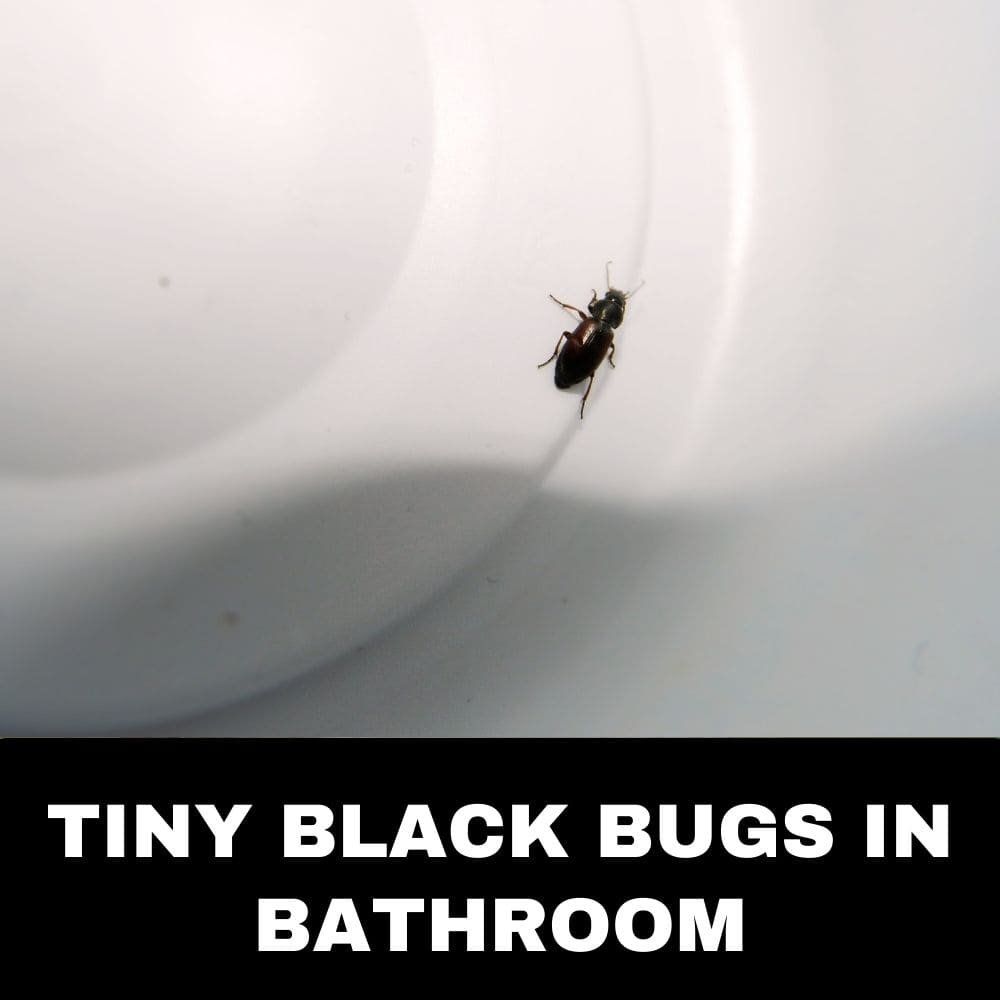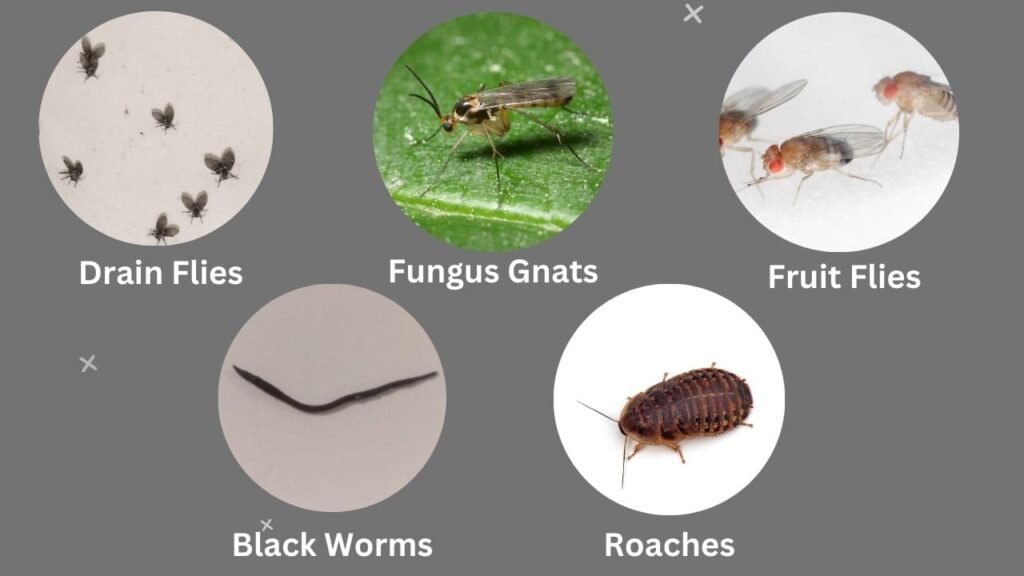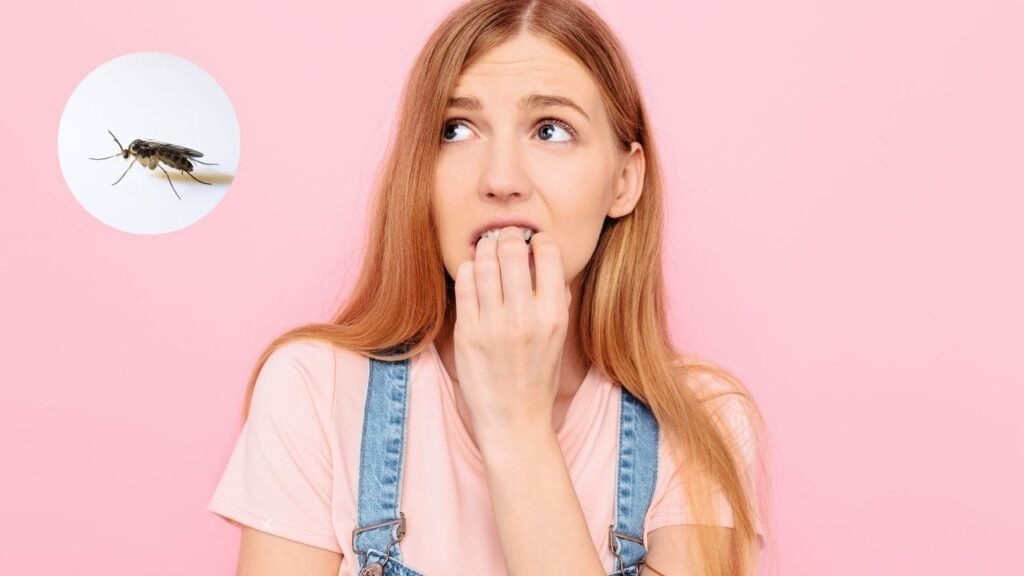


So you’re brushing your teeth and notice some tiny black specks in the sink. Upon closer inspection they are moving! Tiny black bugs, the bane of many a homeowner’s existence, have invaded your bathroom. I’ve been there too – it starts with a few pesky gnats flying around. Before you know it there are hundreds of tiny black bugs swarming sinks, tubs and even ceilings. Dealing with a bathroom bug problem ranges from annoying to downright nightmarish. But don’t worry, I am here to help with the ultimate game plan to get rid of these pesky tiny black bugs in bathroom once and for all.
Identifying precisely what type of insect has invaded can be tricky. The small size and predominately black color of many common bathroom pests makes them hard to differentiate. Plus they often appear in spots where they remain unseen for a while, like deep inside drains or gaps in tile grout. Based on location and appearance though, some of the most likely tiny black bathroom culprits include:
Drain Flies: Also called moth flies due to fuzzy wings, these bugs breed in drain slime. They are only 1-5 mm long, cluster by water sources, and take flight when disturbed.
Fungus Gnats: Attracted to excess moisture, they lay eggs in damp surfaces like around leaky pipes or shower corners. Once hatched the small black larvae feed on fungus and organic matter before transforming into adult gnats.
Fruit Flies: While they’re most attracted to kitchen compost piles, fruity bathroom cleaners can lure them in too. Identifiable by red eyes, brown bodies, and the tendency to hover around ripe produce or sink drains.
Black Worms: Actually fly larvae, not worms. They emerge as fully formed small black flies once completing their lifecycle in breeding grounds like rotting organic material.
Roaches: Places like sewers and pipes provide ideal damp, dirty habitat for roaches to thrive when finding access into homes. They scurry away quickly into cracks and crevices.
While each bug has slightly unique traits, all feed and breed in less sanitary areas where there is moisture and organic matter present. The bathroom’s naturally humid environment combined with lots of pipes, drains and difficult to reach spaces makes it the perfect storm. Finding those conditions allows each bug type to thrive and multiply unchecked.
Seeing those initial few stray bugs means taking prompt action before things get out of hand quick. An infestation growing from just the drain to the walls, ceilings and everywhere in between happens rapidly.
| Bug Type | Size | Appearance | Behavior & Traits |
|---|---|---|---|
| Drain flies | 1-5mm | Delicate, hairy wings. Hover near water. | Attracted to light. Quick, jumpy flight. |
| Fungus gnats | 2-3mm | Long legs and antennae. Single pair clear or gray wings. | Run rapidly over surfaces. Attracted to very damp areas. |
| Fruit flies | 3-4mm | Red eyes. Yellow-brown body. Wings constant blur. | Floating flight. Gather near ripe fruit/sinks. Rub forelegs often. |
| Black worms | 6-12mm | Shiny segmented bodies tapered at both ends. | Wriggle movement. Tunnel through soft, moist wood or soil. Appear nighttime. |

Your likely immediate response after seeing teeny insects scuttling through the bathroom isn’t ‘oh cool, how fascinating’. It’s more like wanting to hose the entire room down in disinfectant and possibly burn it afterwards.
But taking a step back to understand why the bugs have moved in can better equip you to evict them. There are two main attracted lures for the little pests:
Water: All bugs need a water source to survive. Sinks, showers, tubs and toilets provide plenty. Slow drains and clogs even better suit their needs with accumulated stagnant puddles. They lay eggs in damp slime where larvae hatch. Even small leaks in tile grout provide enough moisture.
Food: Drains often house bits of organic grime, hair, soap scum and more to fuel the pests. Bugs like fungus gnats get a feast from mold or mildew resulting from excess condensation on window panes or wet ceilings. Roaches nibble on leftover food particles and grease from dirty surfaces.
Fix these welcoming conditions and the tiny black bugs will move along in their search for better accommodations. Let them remain and you’re looking at a full-on infestation bursting from every crack and crevice soon.
A handful of stray gnats or flies might not seem like anything to fret about. But left multiplying unchecked means you’ll rapidly have a serious issue on your hands. Consequences can include:
Allergic Reactions: Microscopic debris on wings and tiny hairs can cause rashes or stuffy nose and eyes. Each additional bug, especially prevalent with substantial infestations, elevates the reaction risk.
Disease: Certain bugs can spread contamination by carrying bacteria onto surfaces we regularly contact. Roaches in particular are adept at transmitting pathogens through contact with food or food prep areas. Less common risks may include contracting intestinal worms if accidentally swallowing contaminated flies or larvae.
Bites: While not all small black bugs bite humans, some do like mosquito-esque gnats. Painful welts or skin infection can occur if scratched open. Repeated bites over time pose health issues.
Multiply into the Thousands: A few rogue bugs rapidly snowballs into major infestations spanning across entire rooms. All it takes is a couple weeks for spawn to grow from larvae into mature flies able to reproduce again. Excess bugs cause plenty hazardous issues themselves and finding the source gets infinitely harder.
Drain Damage: Masses of bugs plus the accumulation of discarded wings, egg casings, and body parts leads to even worse clogs. Slow or backed up drains provide more appealing conditions for them too in a vicious cycle. This can even escalate into expensive plumbing repairs.
Property Damage: Certain pests attracted to moisture gnaw holes into drywall or tile grout chasing condensation trails or laying eggs. Once gaining access, destruction expands forcing extensive sealing and repairs to fix.
Annoyances: Even just a couple bugs buzzing by ears while trying to bathe quickly drives most people mad. Stepping out of the shower straight into a scattered mess of dead drain flies takes frustration deeper. Infestations can graduate into genuine psychological torment.
I don’t know about you, but I’d happily avoid each and every one of those scenarios. A few easy prevention measures taken promptly can prevent all that hassle and harm.

Play pest control detective inspecting every nook and cranny searching for how and where the tiny black bugs first gained access. Carefully check places like:
Checking all those problem zones helps pinpoint the actual root source so it can be promptly fixed and cut off entry for good. Don’t forget to scan the room perimeter too ensuring they haven’t spread behind cabinets or walls as well.
Bugs need water for survival so systematically eliminate ways they obtain it by:
Checking all those problem zones helps cut off entry for good. Don’t forget to scan the room perimeter too ensuring they haven’t spread behind cabinets or walls as well.
With their growing conditions drying up and access points blocked, attention turns to mopping up remaining bugs still roaming around.
Wash absolutely everything thoroughly using hot water mixed with either vinegar, hydrogen peroxide, rubbing alcohol or natural citrus oil based solutions. Focus cleaning on places like:
Take trash out frequently so food scraps aren’t sitting to attract new swarms. Consider adding small mesh screens over drains when not in use to lock bugs down while cleaning. Just be sure to fully remove food supply and breeding grounds faster than their rapid reproduction rate!
Over-the-counter drain cleaner products use harmful bacteria, enzymes, or chemicals to break down accumulated gunk lining pipes. This organic sludge provides ideal breeding conditions and food supply for bugs to thrive on. Cleaners help dissolve away this grimy habitat hostile to larvae survival.
Specific ingredients to look for include:
Follow individual cleaner instructions on amount and drain contact time needed to work effectively. Using hot water and metal wire scrubs can supplement removing loosened material too. Apply monthly as prevention even after drain flies are gone to keep pipes gunk and pest free.
Before shelling out for pricey brand name traps or sprays, try some homemade solutions first:
Experiment with a couple different bait options at once until discovering which ingredient combo is most effective. Change out refresh traps every few days replacing with new batches. Capturing flies means less laying eggs to fuel future generations.
You can get very creative brainstorming bait ideas too! I had luck with placing funnels into old soda bottles filled with vinegar, juice, wine, sugar water, etc to tempt their sweet tooth while keeping them contained.

Bugs are champion contortionists able to flatten bodies to slide through impossibly narrow cracks in pursuit of water or food.
Close entry points for good by sealing problem areas with:
Take time fully packing gaps along edges rather than quick single beads down the middle and still leaving ample space around margins. Hold off a full day before exposing filled cracks to water allowing ample drying time first.
For serious infestations spanning across multiple rooms or enduring months, it might be time to call in pest control pro reinforcements. Technicians have commercial grade insecticides, vacuum suction extermination tools, and access to treat full property perimeter larvae breeding grounds.
Three key weaponry tactics pros use:
Costs range from a couple hundred to over a thousand dollars depending on size of home, severity of infestation, and treatment methods required. While not cheap, ultimately the pros can solve problems getting continually worse when you’re still spotting strays after prior attempts.
Hopefully identification, clearing entryways, intensive cleaning, remedies and sealing cracks leaves your bathroom pest free. But stay ready to spring back into action at first signs of recurrence:
| Prevention Task | Frequency |
|---|---|
| Use drain cover on sinks/tubs | Daily |
| Pour boiling water down drains | Weekly |
| Treat drains with enzyme cleaner | Monthly |
| Seal tile grout lines | Yearly |
| Clear tub/sink overflow holes | Monthly |
| Replace vinyl seals around toilet base | Yearly |
| Fix dripping taps & condensation issues | Immediately |
| Remove trash frequently | 1-2 times daily |
Staying observant and acting quickly keeps your bathroom healthy, hygienic and nearly impossible for those pesky drain flies or fungus gnats to move back into! Never tolerate an infestation again.
What are tiny black bugs in my bathroom and why are they here?
Tiny black bathroom bugs usually refer to drain flies and fungus gnats which breed in the moist environment, organic buildup inside drains, slime, and standing water. They seek out the bathroom because it provides ideal conditions to thrive.
How did these tiny black drain bugs get into my bathroom?
They likely entered through small cracks in tile grout, gaps surrounding pipe fittings, holes in rotting drywall, or a vent. Adult flies or gnats access the bathroom initially but then larvae hatch and emerge from drains once feeding on sludge.
Will apple cider vinegar actually get rid of my bathroom fruit flies?
Yes, combining apple cider vinegar and dish soap into DIY jar traps can help reduce adult fruit flies that breed around sink drains or cleaning products by attracting and drowning them. But vinegar traps alone won’t fully eliminate infestations already reproducing by addressing underlying causes like standing water and grime.
I see tiny worms in my bathroom at night – what are these small black bugs?
If tiny black worms emerge at night from drill holes or bathroom cabinets, they may be fly larvae feeding on mildew before developing into adults. Letting mildew itself go untreated enables “worms” to thrive. Kill them directly with vacuum suction and eliminate damp conditions stunting growth.
Why do my bathroom drain flies keep coming back even after cleaning?
It’s likely they never stopped breeding within slimy pipe buildup or elbow joints during surface level cleaning. Using drain enzymes monthly paired with DIY remedies like boiling water prevents future generations from growing in hard to reach spots, stopping the cycle for good. Install drain mesh screens too.